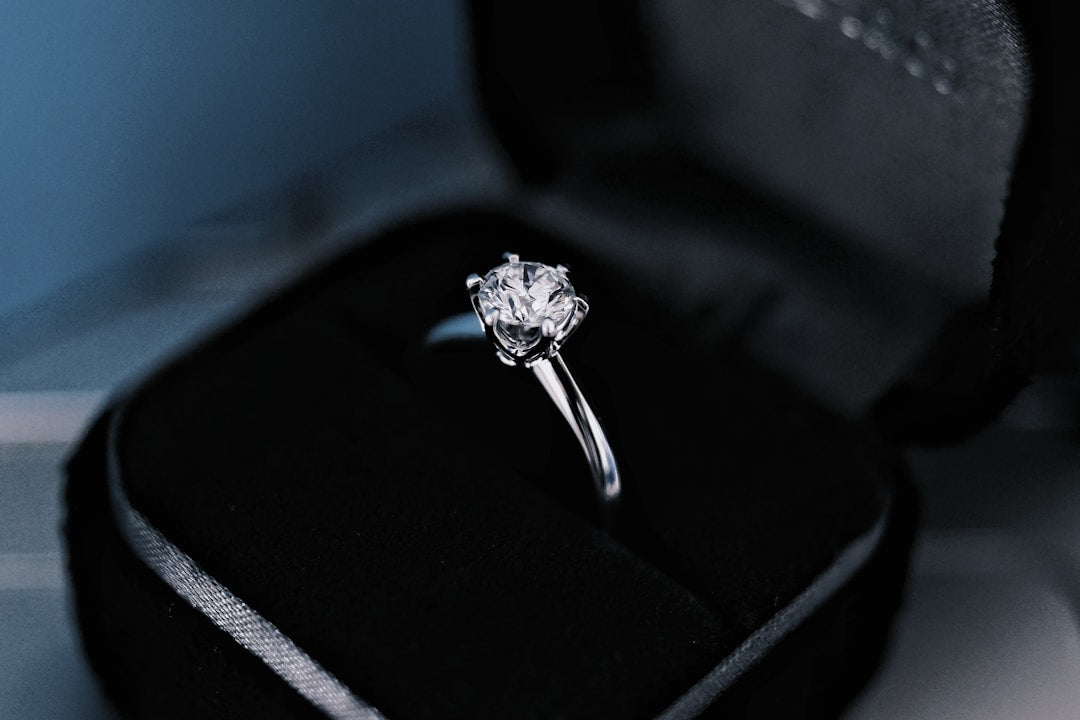Why Your Brass Jewelry Needs Polishing
Brass jewelry offers a unique, warm golden hue that adds a touch of vintage charm or bold statement to any man's style. From rugged cuffs to sophisticated pendants, men's brass accessories possess an undeniable appeal. However, like many metals, brass is susceptible to tarnishing. This natural process occurs when the copper content in the brass alloy reacts with oxygen, moisture, and other elements in the environment, resulting in a dull, darkened, or sometimes even greenish patina.
While some appreciate a naturally aged patina, most prefer their brass pieces to maintain their original lustrous shine. Learning how to polish brass jewelry is essential for preserving its appearance and ensuring your favorite accessories always look their best. Regular polishing not only removes tarnish but also helps protect the metal, extending the life and beauty of your collection. This guide provides effective methods for brass tarnish removal, covering both DIY solutions and commercial options.
Understanding Brass and Tarnish
Before diving into the polishing process, it helps to understand the material. Brass is an alloy primarily composed of copper and zinc. The proportions can vary, affecting the color and properties of the metal. The copper component is mainly responsible for the tarnishing; it oxidizes when exposed to air and moisture, forming copper oxide, which dulls the surface.
Factors that accelerate tarnishing include:
- Humidity and moisture
- Exposure to air
- Contact with skin oils and sweat
- Chemicals (like lotions, colognes, soaps, chlorine)
- Acidic substances
Knowing these triggers helps in prevention, but eventually, some level of tarnish is likely, making brass jewelry care a necessary routine.
Preparation: Getting Ready to Polish
Before you begin polishing your brass necklace, bracelet, or ring, gather your supplies and prepare your workspace. Proper preparation ensures a smoother process and better results.
- Clean the Jewelry First: Remove any surface dirt, oils, or grime. A quick wash with mild soap and warm water, followed by a thorough rinse and dry, is usually sufficient. This prevents grinding dirt into the metal during polishing.
-
Gather Your Supplies: Depending on the method you choose, you'll need specific items. Generally, have these handy:
- Soft polishing cloths (microfiber cloths are excellent)
- A small bowl or container
- Your chosen cleaning agent (DIY ingredients or commercial polish)
- A soft-bristled toothbrush or cotton swabs for intricate details
- Clean water for rinsing
- A clean, dry towel
- Protect Your Workspace: Lay down newspaper or an old towel to protect surfaces from spills or polish residue.
- Protect Yourself: If using commercial polishes, wear gloves and ensure good ventilation.
- Identify Your Brass: Ensure your item is solid brass, not brass-plated. Polishing methods, especially abrasive ones, can damage or remove plating. If unsure, test a small, inconspicuous area first or consult the manufacturer.
DIY Methods: How to Polish Brass Jewelry at Home
Many effective and natural brass cleaner solutions use common household ingredients. These DIY methods are often preferred for their accessibility and gentler nature compared to some commercial products. Here are a few popular techniques for cleaning brass jewelry:
Method 1: Lemon Juice and Salt (or Baking Soda)
The acidity of lemon juice helps break down tarnish, while salt or baking soda acts as a mild abrasive to lift it away.
- Squeeze the juice of half a lemon into a small bowl.
- Add about a teaspoon of salt or baking soda and stir to form a paste. Add more lemon juice or salt/baking soda as needed to get a paste-like consistency.
- Apply the paste directly onto the tarnished brass jewelry using your fingers or a soft cloth.
- Gently rub the paste onto the surface, focusing on heavily tarnished areas. For detailed pieces, use a soft toothbrush to work the paste into crevices.
- Let the paste sit on the jewelry for 5-10 minutes, but don't let it dry completely.
- Rinse the jewelry thoroughly under warm running water, ensuring all paste residue is removed.
- Dry the piece completely with a soft, clean cloth. Buff gently to bring out the shine.
Pros: Natural, readily available ingredients, effective for moderate tarnish. Cons: Can be slightly abrasive; lemon juice is acidic, so rinse thoroughly.
Method 2: Vinegar, Salt, and Flour Paste
Similar to the lemon method, this technique uses the acidity of vinegar combined with salt and flour to create a potent tarnish-removing paste. This is a classic approach for brass tarnish removal.
- In a small bowl, combine equal parts white vinegar and salt (e.g., 1 tablespoon each).
- Gradually add flour while stirring until you form a thick paste.
- Apply the paste generously over the surface of your brass accessory.
- Allow the paste to sit and work on the tarnish for 15-30 minutes, or even up to an hour for heavy tarnish.
- Once the paste has dried slightly, rinse the jewelry thoroughly under warm water, using your fingers or a soft brush to remove all traces of the paste.
- Dry the piece meticulously with a soft cloth and buff to a shine.
Pros: Effective on tougher tarnish, ingredients are common pantry staples. Cons: Paste can be messy, requires thorough rinsing, vinegar smell.
Method 3: Ketchup or Tomato Paste
It might sound unusual, but the mild acids in tomatoes (found in ketchup or tomato paste) can effectively dissolve tarnish. This is a surprisingly gentle DIY brass polish method.
- Apply a thin layer of ketchup or tomato paste directly onto the brass jewelry.
- Let it sit for 10-30 minutes. The duration depends on the level of tarnish. Keep an eye on it.
- Use a soft cloth or your fingers to gently rub the ketchup over the surface.
- Rinse the piece thoroughly with warm water, ensuring no residue remains (especially in detailed areas).
- Dry completely with a soft cloth and buff.
Pros: Very gentle, easy to apply, uses a common condiment. Cons: May not be strong enough for heavy tarnish, can be a bit sticky.
Method 4: Mild Soap and Water
For general maintenance and very light tarnish or surface grime, simple soap and water can work wonders. This is less about deep polishing and more about regular brass jewelry care.
- Add a few drops of mild dish soap to a bowl of warm water.
- Submerge the brass jewelry and let it soak for a few minutes.
- Gently scrub the surface with a soft cloth or soft toothbrush, paying attention to details.
- Rinse thoroughly with clean water.
- Dry completely with a soft cloth. This method won't remove significant tarnish but helps maintain cleanliness.
Pros: Very gentle, good for regular cleaning, safe for most pieces (unless containing sensitive stones). Cons: Ineffective against moderate to heavy tarnish.
Using Commercial Brass Polishes
If DIY methods aren't cutting through heavy tarnish or you prefer a dedicated product, commercial brass polishes are available. These products are specifically formulated for polishing brass jewelry and often contain chemical agents to dissolve tarnish quickly and inhibitors to help slow down future oxidation.
When to Use Them:
- For heavily tarnished pieces where DIY methods are too slow or ineffective.
- When you want a very high-gloss, uniform finish.
- If you desire the added protective layer some polishes provide.
How to Use Commercial Polish:
- Read the Instructions: Always follow the manufacturer's directions carefully.
- Ensure Ventilation: Work in a well-ventilated area, as these polishes often have strong fumes.
- Wear Gloves: Protect your skin from chemicals.
- Patch Test: Apply a small amount to an inconspicuous area first to ensure it doesn't damage the metal or any special finishes.
- Apply Sparingly: Use a small amount of polish on a soft, clean cloth.
- Rub Gently: Rub the polish onto the brass surface in gentle, circular motions or back-and-forth strokes. Don't apply excessive pressure.
- Work in Sections: For larger pieces, work on small sections at a time.
- Remove Residue: Use a clean section of the cloth or a separate clean cloth to buff away the polish residue and reveal the shine. Some polishes require rinsing; check the instructions.
- Final Buff: Use a final clean, dry microfiber cloth for a high shine.
Caution: Commercial polishes can be more aggressive than DIY methods. Use them judiciously, especially on delicate or intricately detailed men's brass accessories.
Essential Polishing Techniques and Tips
Regardless of the method you choose for how to polish brass jewelry, follow these best practices:
- Use Soft Cloths: Always use soft, non-abrasive cloths like microfiber, flannel, or an old cotton t-shirt. Avoid paper towels or abrasive materials that can scratch the brass.
- Gentle Pressure: Let the cleaning agent do the work. Rubbing too hard can cause scratches or wear down details.
- Address Crevices Carefully: Use a soft-bristled toothbrush (not one you use for teeth!) or cotton swabs to gently clean intricate designs, engravings, or links in a chain.
- Rinse Thoroughly: Leaving cleaning agents (even natural ones) on the metal can lead to discoloration or corrosion over time. Rinse well with clean water.
- Dry Completely: Moisture is a major culprit in tarnishing. Pat the jewelry dry immediately after rinsing using a soft towel. Ensure no water remains in crevices or hidden spots. Air drying can leave water spots and encourage tarnish to return faster.
- Buff for Shine: After drying, a final buff with a clean, dry microfiber cloth enhances the luster.
Preventing Tarnish: Keeping Your Brass Shiny Longer
While polishing removes existing tarnish, prevention is key to minimizing how often you need to do a deep clean. Here’s how to keep your brass jewelry looking great:
- Store Properly: This is crucial. Store brass items individually in airtight plastic bags or small pouches with anti-tarnish strips. This limits exposure to air and moisture.
- Keep it Dry: Remove brass jewelry before showering, swimming, washing hands, or exercising.
- Avoid Chemicals: Put on jewelry *after* applying lotions, colognes, hairspray, or other chemical products. These substances can accelerate tarnishing.
- Wipe After Wear: After taking off your brass jewelry, give it a quick wipe with a soft cloth to remove skin oils and moisture before storing it.
- Consider Lacquer (Use with Caution): Some brass jewelry comes with a clear lacquer coating to prevent tarnish. You can apply clear metal lacquer yourself, but this changes the feel, may eventually chip or wear unevenly, and makes future polishing difficult until removed. It's often best suited for decorative items rather than frequently worn jewelry.
Important Considerations: When to Be Cautious
Not all brass items should be polished aggressively, or at all, using these methods:
- Brass-Plated Items: Vigorous polishing or abrasive cleaners can easily rub off the thin brass plating, revealing the base metal underneath. If you suspect your item is plated, clean it very gently with mild soap and water only.
- Jewelry with Gemstones or Other Materials: Acids (lemon, vinegar) and chemical polishes can damage porous gemstones (like turquoise, pearls, opals), wood, leather, or other non-metal components. Clean the brass parts carefully, avoiding contact with these sensitive materials.
- Antiques or Patinated Finishes: Some brass pieces are intentionally designed with a dark patina as part of their aesthetic, especially antique or vintage-style items. Polishing these will remove the intended finish and potentially decrease their value or alter their look undesirably. Clean only with a soft, dry cloth if needed.
Knowing how to polish brass jewelry effectively and safely ensures your favorite pieces retain their captivating shine. Whether you opt for a simple natural brass cleaner from your kitchen or a specialized commercial product, regular care and proper storage are the secrets to long-lasting luster for all your men's brass accessories, from a statement brass bracelet polish requirement to detailed brass necklace cleaning. Keep them gleaming, and they’ll continue to enhance your style for years to come.

